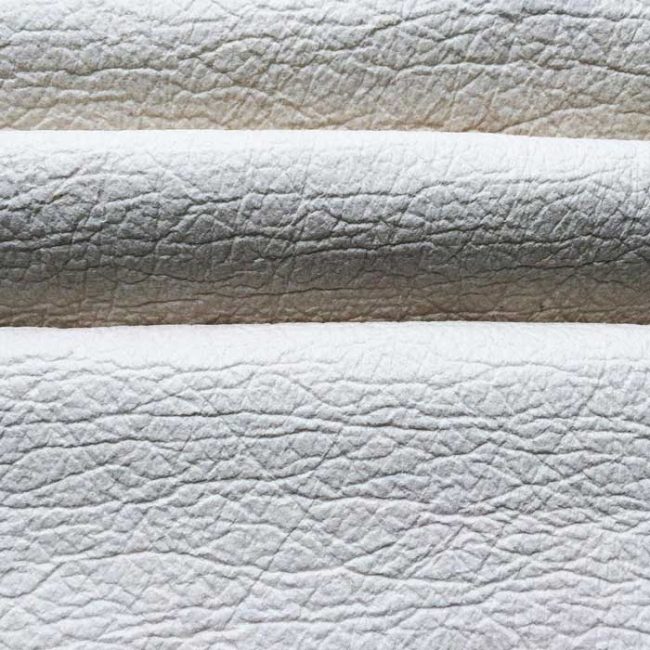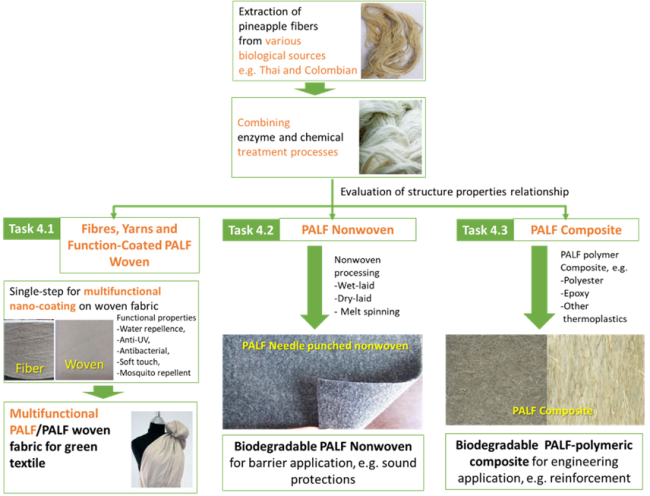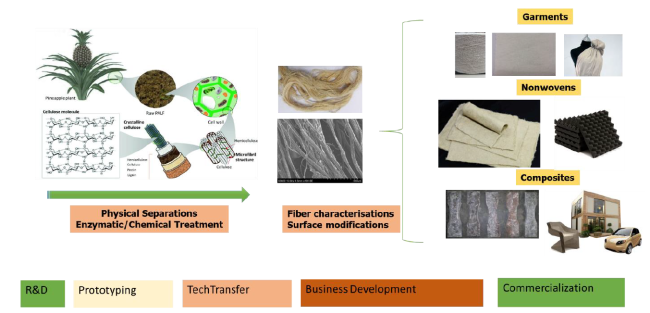
Utilisation of pineapple leaf fibres for bio-based textiles
The phenotypic and genotypic characterisation of 100 Colombian/ Thai cultivars, will increase the general understanding of pineapple traits, informs Thomas Gries and Seyit Halaç.
Natural fibres are increasingly being used to reduce CO2 emissions and environmental pollution in the production of technical textiles.
Issue
Besides hemp and flax, the use of pineapple leaf fibres is another potential alternative. During pineapple cultivation, the pineapple leaves are left over as plant waste. Pineapple leaf fibres can be used by extracting the fibres from the leaves and be utilised as a sustainable and value added resource for a bio-based textile industry.
Aim and approach
The goal of PiñaFibre project is to utilise plant waste, i.e. pineapple leaves, of the pineapple production to utilise a sustainable resource for fibres and evaluate its value chain for the bio-based industry. Therefore, value-added resources such as nano-coated fibres, composites, and exemplary yarns from PALF, will be produced and evaluated in their properties, value-chain and markets (Figure 1). Stakeholders in Germany already expressed strong interest in PALF as a sustainable resource for bio-based textile and composite production. Furthermore, the PALF will open a new market for farmers in the humid tropics and potentially a second income promoting a drought tolerant crop that produces a fruit for the local market and export as well as PALF.
The project goals are:
⦁ Utilising PALF as a sustainable and value added resource for a bio-based textile industry
⦁ Evaluation of PALF and derived products value-chain and markets
⦁ Identification genes underlying fibre content supporting the breeding process for a dual purpose pineapple

Figure 1:Utilisation of PALF, divided in three parts.
Solution
The value-chain and markets of PALF will be evaluated, exemplary products produced, and the results will be disseminated to identify stakeholders (Figure 2). For a sustainable production, we will support breeding of new cultivars, phenotyping and genotyping methods will be established and the underlying genetics of important economic traits identified for future targeted breeding and propagation of a dual-purpose crop ‘fruit and fibre’ to stakeholders. The phenotypic and genotypic characterisation of 100 Colombian/ Thai cultivars, will increase the general understanding of pineapple traits. All data of the project will be integrated, visualised and provided (open access) to the scientific community, breeders, and will enable gene discovery for future crop improvement.

Figure 2: Development concept for pineapple-fibre prototypes in garments, nonwovens and composites
Economic significance & benefits
The transformation to a bioeconomy requires continuous, reliable and affordable production of biomass from the agricultural sector. The proposed project enables stakeholder to produce dual purpose plants (fruit and fibre), and creates additional value-added and sustainable products with importance for industry. The PiñaFibre project will contributes directly to targets of the National Strategy Of Bioeconomy 2030 (NSBE2030) and ‘Nationale Bioökonomiestrategie für eine nachhaltige, kreislauforientierte und starke Wirtschaft’ (NBS). The project contributes to the challenges ‘Sustainable Agricultural Production’ set out but the NSBE2030 by potentially improving a tropical fruit and using PALF as raw material for the bio-based textile industry.
Acknowledgement
PiñaFibre is funded by the Federal Ministry of Education and Research (project management organisation: Project Management Jülich – PTJ) – funding code: 031B1211B.
About the author:
Thomas Gries is a Professor at RWTH Aachen University and Seyit Halaç is a Researtch Associate- Staple Fibre Technlogies at RWTH Aachen University.



